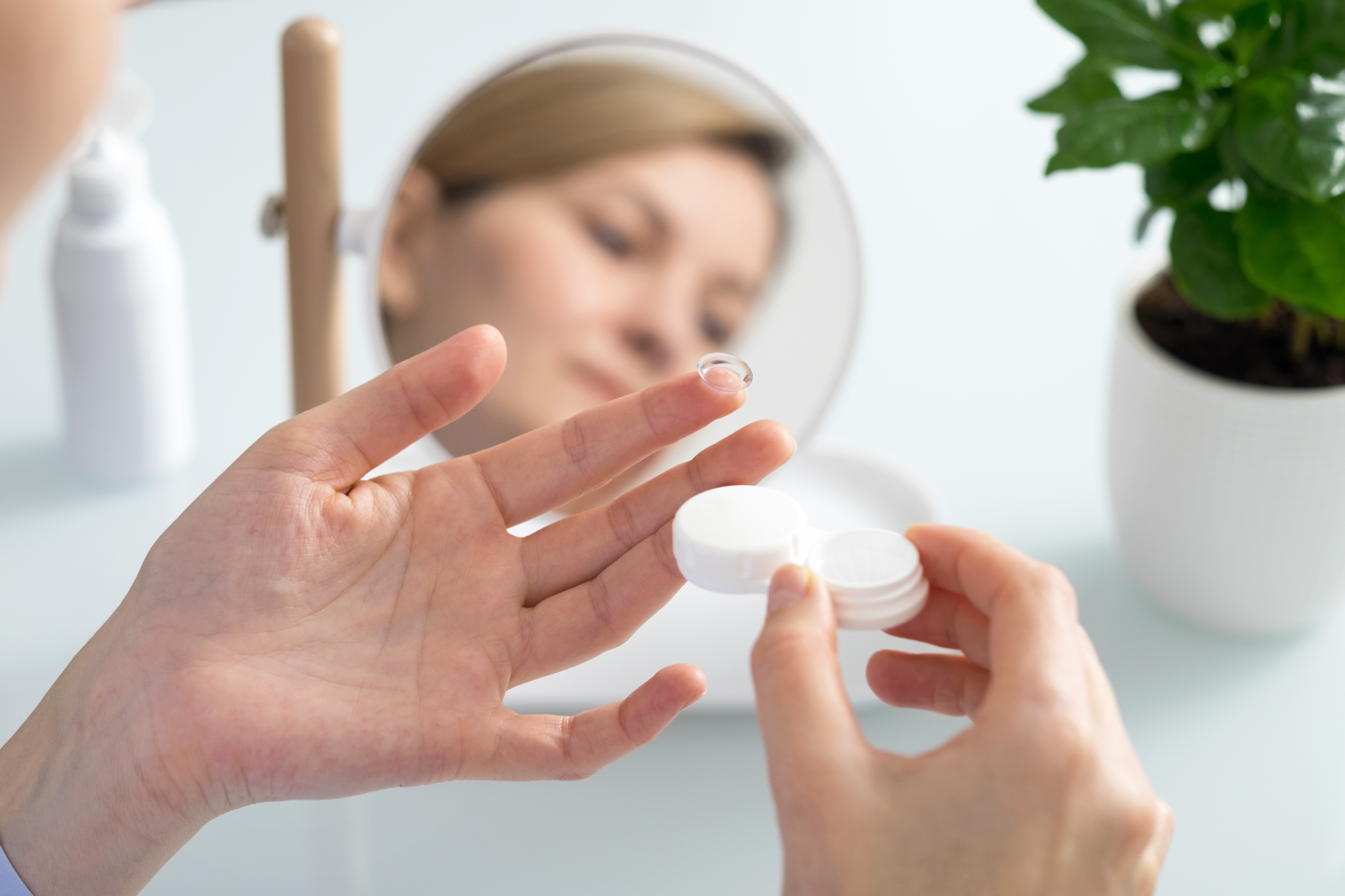Contact Lenses
Eye Treatments
If you’re looking for a way to improve your eyesight and see the world more clearly, Contact Lens may be the perfect solution.
Contact lenses are thin, curved discs made of a breathable material that is placed directly on the surface of the eye. They are used to correct vision problems, providing an alternative to eyeglasses. Contact lenses can help correct refractive errors such as nearsightedness (myopia), farsightedness (hyperopia), astigmatism, and presbyopia.
Contact lenses work by refracting light as it enters the eye, helping to focus it properly on the retina for clearer vision. They offer several advantages, including a wider field of view, freedom from glasses, and compatibility with various physical activities.
Contact lenses come in different types, including soft lenses, rigid gas permeable lenses, toric lenses for astigmatism, multifocal lenses for presbyopia, and specialty lenses for specific eye conditions. They require proper cleaning, disinfection, and regular replacement to maintain eye health and optimal vision correction.
It is essential to consult with an eye care professional to determine the most suitable type of contact lenses for your specific needs, undergo a fitting process, and receive guidance on proper usage, care, and follow-up appointments to ensure the best comfort, safety, and visual outcomes.
All you need to know about eye surgery, including price, process, or contact us!

FAQ
How to put in contact lenses?
To put in contact lenses, begin by washing your hands thoroughly with soap and water. Dry them with a clean, lint-free towel. Make sure your contact lens is clean and free from any debris or damage. With one hand, hold your eyelid open gently, while using the other hand to place the lens on the tip of your index finger. Look straight ahead or slightly upward into a mirror. Use your middle finger to pull down your lower eyelid. With a steady hand, place the lens onto the center of your eye, taking care to avoid blinking as much as possible. Release your eyelid slowly and blink a few times to help the lens settle into position. Repeat these steps for your other eye if you are using a pair of contact lenses. If you are new to wearing contact lenses, practice and patience are key, and it’s always best to follow the specific instructions provided by your eye care professional or the lens manufacturer. If you encounter any discomfort or difficulties, seek guidance from your eye care professional.
How to remove contact lenses?
To remove contact lenses, start by washing your hands thoroughly with soap and water, and then dry them with a clean towel. Look straight ahead into a mirror and use your index finger to gently pull down your lower eyelid. With your middle finger, touch the edge of the lens and slide it down onto the white part of your eye. Pinch the lens gently between your thumb and index finger, and carefully remove it from your eye. Repeat the process for the other lens if you are wearing a pair. Remember to follow the specific instructions provided by your eye care professional or the lens manufacturer, and if you have any difficulties, consult with your eye care professional for assistance.
How long do contact lenses last?
Depending on the type of lenses and the suggested wearing schedule from your eye care specialist, contact lenses have varying life spans. Disposable contact lenses often require replacement every day, every week, every two weeks, or every month. Daily disposable lenses are worn only once and discarded at the end of the day, whereas other varieties require replacement at predetermined intervals. Traditional reusable lenses can last for a few months to a year, but they need to be cleaned, sterilised, and stored properly. To maintain ideal eye health and vision correction, it’s crucial to adhere to your eye care professional’s suggested replacement schedule and maintenance guidelines.
What contact lenses are best for dry eyes?
For individuals with dry eyes, the best contact lenses options include silicone hydrogel lenses, daily disposable lenses, moisture-rich lenses, and scleral lenses. Silicone hydrogel lenses allow more oxygen to reach the eyes, reducing dryness. Daily disposable lenses eliminate the need for cleaning and disinfecting solutions, reducing irritation. Moisture-rich lenses retain moisture on the eye’s surface for added comfort. Scleral lenses, larger in diameter, create a fluid reservoir for those with severe dry eyes. Consulting an eye care professional is crucial to determine the most suitable contact lens option based on individual needs and eye health.
Are contact lenses safe?
Yes, contact lenses are generally considered safe when used correctly. However, it is important to follow proper hygiene practices and guidelines provided by your eye care professional. Ensure that you have a valid prescription and that the lenses are fitted properly to your eyes. Good hygiene, including washing your hands before handling lenses, is crucial. Clean and disinfect lenses as instructed and replace them at the recommended intervals. Avoid wearing lenses for longer periods than advised and schedule regular eye exams. If you experience any discomfort or vision changes, consult your eye care professional. With proper care and adherence to instructions, contact lenses can be a safe and convenient option for vision correction.
Contact us now in case you have any questions!
Types of Treatments
Request Form
Get your free consultation
- Need guidance and reassurance?
- Talk to a real person from MedClinics!
- Let's find the perfect doctor together.